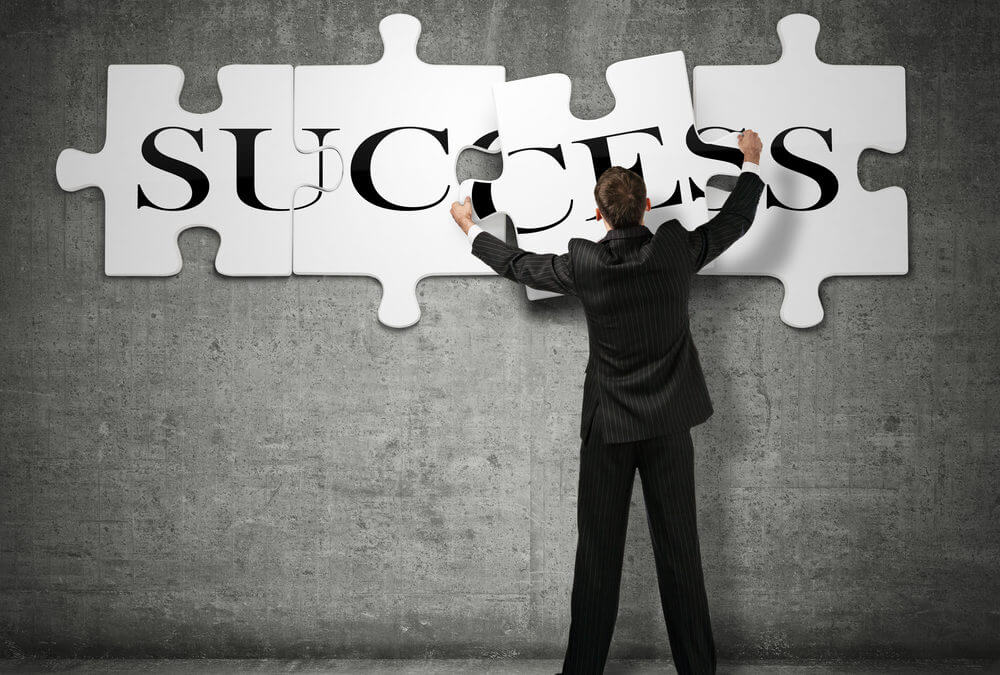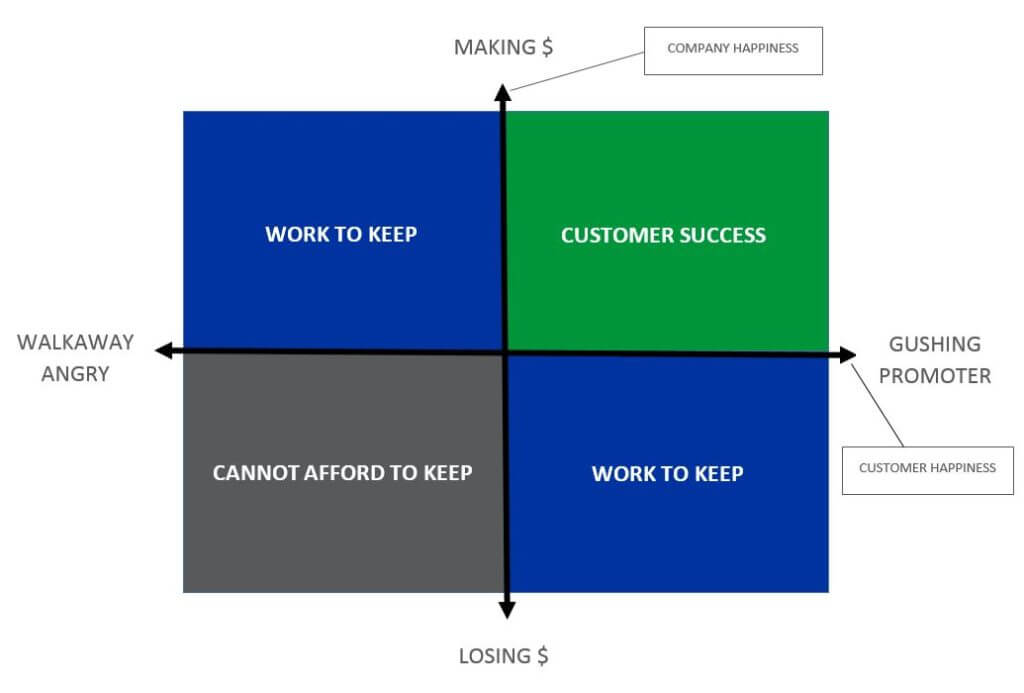How Do We Determine If We Are Successful At Customer Success?
Customer Success Series
Written by: Jeff Nesler, VP of Services Delivery
Customer Success Series, Part 1

What is Customer Success?
One term that repeatedly pops up these days is “Customer Success”. While I had noticed the term appearing in some organizations, I hadn’t seen it used much until recently. Now many companies have individuals and departments that carry the title “Customer Success”. Over the last couple years, I explored this topic to determine what this really means for companies and their customers. There was and still is a lot of confusion regarding the term. There doesn’t seem to be a solid definition of what Customer Success is nor of the job roles that are defined by it. If we cannot define it, how do we determine if we are successful at “Customer Success”?
Does a happy customer constitute “success”? What does “happy” mean? Does a quiet customer mean that they are successful? Does a noisy customer mean that you are unsuccessful? If you’re working escalations on behalf of a customer, does that mean failure? Is customer success simply selling more? Can we have a successful customer & an unsuccessful (unprofitable?) business relationship? Do we want that?
Since the meaning of “success” is so unfocused in this context, I propose that we start by using the definition of “happiness” according to Merriam Webster: either “(a) a state of well-being and contentment or (b) a pleasurable or satisfying experience”. I think that both apply when we talk about the customer experience. A state of well-being could mean that our customer is getting tangible value from what we have to offer. That would not apply if our product or service was having many issues or if the actual product deliverable didn’t align with expectations when purchased. Note that it doesn’t mean that our solution is trouble-free and sometimes our biggest advocates are those who have walked through the fire with us. They key is how we manage the situation while we are “in the fire”. I also like the concept of a “satisfying experience”. We can all relate to the sense of confidence and joy we get if something goes according to or (even better) exceeds our expectations.
I hope you see the key word here: expectations. If we fail miserably delivering what is expected by our customer, then we can end up with a “walkaway angry” customer who will dump our solution and move to a competitor as soon as they are able. Moreover, they are probably letting everyone know about their subpar experience. On the flip side, the “gushing promoter” believes that we are delivering more than expected and tells everyone that they know about how great their experience is.
These two endpoints define a customer happiness continuum. Everyone who delivers services & support fully understands the highs, lows, frustrations and satisfaction that comes as we deal with situations each day. While we may have difficulty measuring happiness, we can intuitively place our customers somewhere on the line.
Here’s something to ponder: Can we have customer success without company success?
Join us next time while I explore this question and introduce a model that will help us to understand what Customer Success really means.
Customer Success Series, Part 2

How Does Company Success Tie in to Customer Success?
Last time I introduced the concept of a customer happiness continuum. This continuum ranges from the “walkaway angry” customer who moves to a competitor as soon as they are able to the “gushing promoter” who praises our work as having gone beyond their expectations. While we may have difficulty measuring happiness, we can intuitively place our customers somewhere along this continuum.
But is that all that “customer success” entails? Can we define “customer success” merely as movement along this continuum (the farther to the right the point is, the greater the customer’s “happiness”)? Or does something else factor into the equation?
For instance, can we have customer success without company success? Is it customer success if we have a customer who continually beats us for very little return but continues to buy? Hard question. We may have the happiest customers on the planet who continue to buy but if we are doing unnatural or money-losing activities to keep them happy, is anyone really benefiting? Shouldn’t the customer want the company to be successful too? Because if they are then they can direct more energy into enhanced support for the customer and both would mutually prosper.
I suggest that customer success is the intersection of customer happiness & company happiness (e.g. profitability). But it is more than a point – it is a quadrant as shown below:

Of course, this model is simple and it doesn’t work in all cases but I think it makes sense generally. The customer success quadrant contains those customers who are happy and create happiness for our company; profit is one example measure of company happiness. Note that there are levels of success. Moving diagonally up and right in the quadrant is better than being by the intersection point. A highly profitable customer who is neutral constitutes a business risk.
I also don’t think that we want to keep customers who are both dissatisfied and cost our company happiness (money). Again, this is a continuum so maybe customers in this quadrant can be recovered if they are slightly dissatisfied and costing us only a bit. We really need to assess the situation closely to determine if we continue to invest in that account. This takes discipline and confidence.
The “work to keep” quadrants are either profitable despite our customer unhappiness or happiness despite costing us money. Because we have a positive measure in both, we should attempt to rectify the dissonance.
Maybe we don’t have proper expectations alignment with our customer who continues to buy and they are a flight risk. We should take some actions to fix the problem(s) so we can keep a profitable customer. If we lose money on a happy customer, it could also be symptomatic of missed expectations in the other direction or perhaps our service delivery processes need to be made more efficient.
Next time I will expand on the relationship between customer happiness and company happiness and discuss why a mutually “happy” relationship is necessary to maintain customer success. To do this, I will explore the various goals of customer success and share some insight into what actions Source takes to ensure that we meet those goals and thereby boost our relationships with our partners to new heights.
Customer Success Series, Part 3
How to Establish and Maintain Customer Success
Since the time of the first sale, having satisfied customers has been important. Why? Because selling more is better and selling to an existing customer is easier than finding a new one. Few dispute this. The natural conclusion is that happy customers buy more. True? For the most part. However, I’ve known customers who continue to buy because they felt as if they had no alternative. Their decision had little to do with happiness and sometimes occurred while sorely lacking it. Some even had competitive alternatives and still felt backed into a corner for a combination of financial, time investment, or product compatibility reasons.
Will these dissatisfied customers stay for the long haul? Any chance to sell a follow-on solution? Will they advocate for our company? Can we get candid feedback about our solution? The answer to these questions is, of course, no. And worse, they are likely advocating AGAINST our company.
I mentioned this challenge last time when I drew out a model for the relationship between customer success and company success. A mutually “happy” relationship is necessary to maintain customer success; happy customers will trust us with more or extended services, and that growth then allows us to return enhanced quality support for our customers. So what can Source do for those who are in the blue “Work to Keep” quadrants? Our objective is to increase the “success” of both Source and our customers so that we can move their status into the green “Customer Success” quadrant. I have identified four goals to meet this objective and I will expand on the first two in this post.
- Minimize churn and maximize longevity
- Increase our solution footprint
- Turn our customers into advocates
- Develop a customer feedback loop

Minimize Churn & Maximize Longevity
Our primary goal is to minimize customer turnover and to retain our customers for as long as possible. This is widely recognized as the primary goal of Customer Success. To answer why, let’s look through the lens of history. In the “olden” days of large capital expenditures, customer retention was an issue, but the lifespan of a problem was perceived in years rather than months with the era of anything-as-a-service (XaaS). When customers acquired systems that have a three to seven-year life span, they had to find a way to make their investment work or face the consequences. They took on the success responsibility directly to ensure that their chosen solution worked for their company. If it didn’t, the sponsors had to live with a poor choice until some later time when the solution was depreciated or some other business inflection opened a door for change.
Now contrast that with the world today. Many solutions are enabled with anything-as-a-service models and the narrative has changed. Clients pay subscription fees for desired solutions lessening their financial burden. If a poor decision is made for one reason or another, it’s much easier to move to a competitor if they are unhappy. With a monthly subscription it’s really simple. Certainly, an extra 4-5 years of revenue is significant and that’s why it’s crucial to keep today’s customers happy. Success ownership is now a business problem because our happiness depends on it.
Increase Solution Footprint
A second goal is to increase our solution footprint. We selfishly want to become as sticky as possible in our customer’s world. By understanding their business as well as they do, we become a trusted advisor and partner in which we learn more about where our solution fits and has expansion potential.
In a standard customer/vendor relationship, companies are often uncomfortable asking their client to do things differently for fear of damaging the relationship. Customers, however, rarely feel this way. A sign of a healthy relationship is when we feel at ease to have a “let’s think about this differently” discussion with our partner who is open to that. Each party should be viewed as an extension of the other’s team. Our goal is win-win: Increase happiness with our solution while lifting business happiness by making it more difficult to switch to a competitor.
There are 3 facets to increasing our solution footprint:
- Increase depth & breadth of feature set use. Every customer goes through a solution learning curve and many stop before realizing the full potential. It is said that most customers use only 10%-15% of available features. If we demonstrate how some of the under-used features can be of benefit, we become stickier.
- Find adjacent business opportunities. Our trusted advisor status helps us to understand where we can add value to additional (likely adjacent) areas of our customer’s business. By showing how to solve a business problem perhaps not considered before we expand our footprint and become stickier.
- Accelerate the velocity and realized benefits of our solution. The goal is to minimize friction and get our customer so comfortable with our solution so that they (knowingly or not) push more and more of their business through it at an increasingly faster rate.
The key to all of these is being that trusted advisor. Show them the value. Show them the savings. Break down barriers to use. Increase adoption. If we attain that level of relationship, we are almost guaranteed to increase customer happiness and our stickiness.
Our goal in attaining the status of trusted advisor is that our customers will advocate for our business because they are so pleased with the service they have received. And ideally feedback should not travel in only one direction; accepting our customer’s honest feedback is just as valuable to us as our feedback can be to them.
We’ll expand on each of these goals next time.
Customer Success Series, Part 4

How to Establish and Maintain Customer Success, cont.
Last time I began to explore the goals Source has set to reach our objective of establishing and maintaining Customer Success. Looking at the model I established, these goals are meant to assist those customers who are in the blue “Work to Keep” quadrants move into the green “Customer Success” quadrant. Customers might be in the blue quadrants for various reasons – either they are unhappy and not benefiting from our working relationship or Source is unprofitable from the working relationship and therefore losing the ability to provide the highest quality service to that customer.

As I discussed last time, our first two goals to help shift these “Work to Keep” customers over are to minimize customer turnover and maximize longevity and increase our solution footprint. Both goals seek to set Source as a highly-valuable, trusted advisor to our customers so that they might profit from our expertise and insight.
Our final two goals expand on this. First, we want to provide the best service possible so that our customers become advocates for our company. And second, because we realize that we should not be the only ones offering advice and feedback, we hope to develop a customer feedback loop.
Turn Customers to Advocates
What’s the best way to sell our solution to the marketplace? What lends the most credibility to our amazing service claims? Nothing beats “gushing promoters” who actively endorse our solution & company because they are crazy happy about it. Doesn’t it make sense that our customer’s willingness to help us would be a solid indicator of their happiness? The third Customer Success goal then is to make our clients so happy that they become walking advertisements for our business. We want them to be bubbling references, peer promoting ninjas, and stout advocates for our company.
How do we do this? By setting proper expectations with our partner and then meeting and exceeding them. This sets us apart from most companies and people on the planet. Do it for the most mundane of tasks and the big ones. Soon, credibility is established and a sense of camaraderie grows. Customer happiness follows and they will move toward gushing promoter.
Develop a Customer Feedback Loop
Our final goal extends the trusted advisor relationship discussed above. If Source is established as a trusted advisor, what prevents our customer from doing the same for us? The value comes when our customer can honestly tell us what is working, what is not, and why. The feedback could be about process issues, solution improvements, or whatever. This is gold! Listen, acknowledge what they are telling us, and ACT on it. The working relationship will reach a new level. Our customer becomes more vested in the experience and therefore more likely to stay.
To review, our four goals to establish and maintain Customer Success are to:
- Minimize churn and maximize longevity
- Increase our solution footprint
- Turn our customers into advocates
- Develop a customer feedback loop
We want to be as valuable to our customers as possible by providing the highest-quality services and becoming a trusted advisor they can count on. To achieve Customer Success, we must work with our customers to create a working relationship that benefits both Source and our customers. And like any relationship, it is one that must be nurtured and supported.
Join me next time as I close this series and discuss “LIVING” Customer Success rather than just “doing” Customer Success.
Customer Success Series, Part 5

“LIVING” Customer Success
In the last couple posts in this series I discussed Source’s four goals to establish and maintain Customer Success:
- Minimize churn and maximize longevity
- Increase our solution footprint
- Turn our customers into advocates
- Develop a customer feedback loop
By putting all of these facets TOGETHER a new, positive dynamic is created WITH our customer. (Note that I didn’t say FOR our customer.) We become an advocate and trusted advisor to our customer at a level not possible before. They become a company advocate, cheer us on, and promote our value. The relationship goes to another level and we look to the long game. We care what is going to happen to our customer next quarter, next year, and beyond. And because our solution is so integral their operations, they become concerned with our company. Sure we have to fix the problem of the day, but it seems less impactful in the overall picture. We build strong ties to help us through challenging situations. We can speak honestly for mutual benefit.
Doesn’t it sound like I’m talking about a deep personal relationship? I am. Contrast this with the traditional customer vendor relationship where the goal is to beat the crap out of each other. Source’s relationships are deep and our approach is on a different plane; that’s what makes it special. That’s what builds Customer Success.
Anybody can say that they are “doing” Customer Success. The real question is: are you “LIVING” it?



